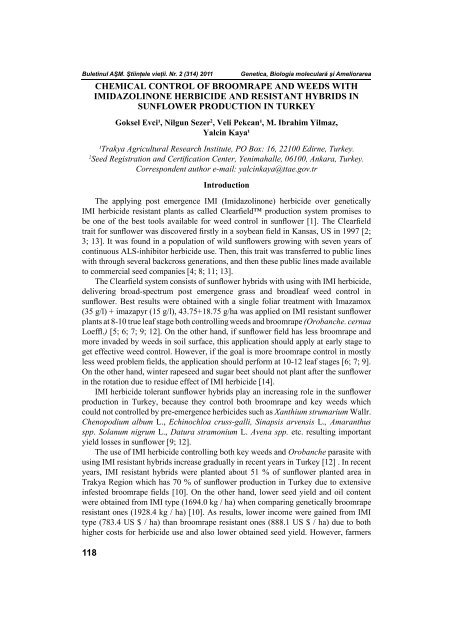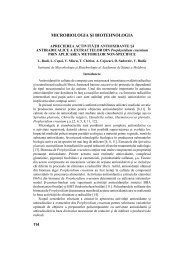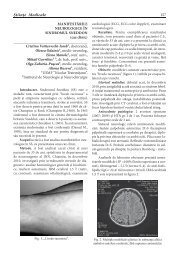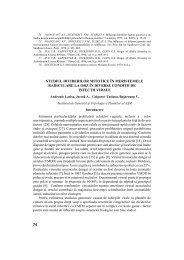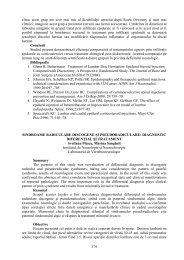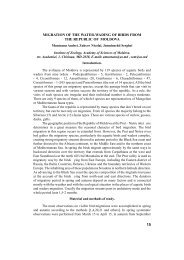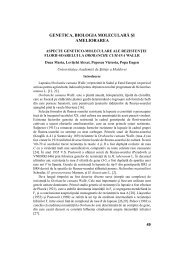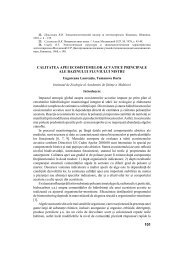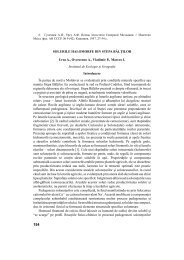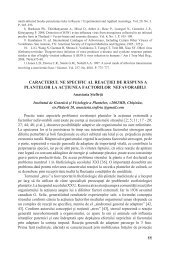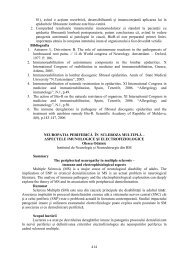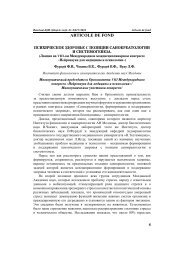209 CONTENTS
209 CONTENTS
209 CONTENTS
Create successful ePaper yourself
Turn your PDF publications into a flip-book with our unique Google optimized e-Paper software.
Buletinul AŞM. Ştiinţele vieţii. Nr. 2 (314) 2011<br />
118<br />
CHEMICAL CONTROL OF BROOMRAPE AND WEEDS WITH<br />
IMIDAZOLINONE HERBICIDE AND RESISTANT HYBRIDS IN<br />
SUNFLOWER PRODUCTION IN TURKEY<br />
Goksel Evci¹, Nilgun Sezer 2 , Veli Pekcan¹, M. Ibrahim Yilmaz,<br />
Yalcin Kaya¹<br />
¹Trakya Agricultural Research Institute, PO Box: 16, 22100 Edirne, Turkey.<br />
2 Seed Registration and Certi cation Center, Yenimahalle, 06100, Ankara, Turkey.<br />
Correspondent author e-mail: yalcinkaya@ttae.gov.tr<br />
Introduction<br />
Genetica, Biologia moleculară şi Ameliorarea<br />
The applying post emergence IMI (Imidazolinone) herbicide over genetically<br />
IMI herbicide resistant plants as called Clear eld production system promises to<br />
be one of the best tools available for weed control in sun ower [1]. The Clear eld<br />
trait for sun ower was discovered rstly in a soybean eld in Kansas, US in 1997 [2;<br />
3; 13]. It was found in a population of wild sun owers growing with seven years of<br />
continuous ALS-inhibitor herbicide use. Then, this trait was transferred to public lines<br />
with through several backcross generations, and then these public lines made available<br />
to commercial seed companies [4; 8; 11; 13].<br />
The Clear eld system consists of sun ower hybrids with using with IMI herbicide,<br />
delivering broad-spectrum post emergence grass and broadleaf weed control in<br />
sun ower. Best results were obtained with a single foliar treatment with Imazamox<br />
(35 g/l) + imazapyr (15 g/l), 43.75+18.75 g/ha was applied on IMI resistant sun ower<br />
plants at 8-10 true leaf stage both controlling weeds and broomrape (Orobanche. cernua<br />
Loef .) [5; 6; 7; 9; 12]. On the other hand, if sun ower eld has less broomrape and<br />
more invaded by weeds in soil surface, this application should apply at early stage to<br />
get effective weed control. However, if the goal is more broomrape control in mostly<br />
less weed problem elds, the application should perform at 10-12 leaf stages [6; 7; 9].<br />
On the other hand, winter rapeseed and sugar beet should not plant after the sun ower<br />
in the rotation due to residue effect of IMI herbicide [14].<br />
IMI herbicide tolerant sun ower hybrids play an increasing role in the sun ower<br />
production in Turkey, because they control both broomrape and key weeds which<br />
could not controlled by pre-emergence herbicides such as Xanthium strumarium Wallr.<br />
Chenopodium album L., Echinochloa cruss-galli, Sinapsis arvensis L., Amaranthus<br />
spp. Solanum nigrum L., Datura stramonium L. Avena spp. etc. resulting important<br />
yield losses in sun ower [9; 12].<br />
The use of IMI herbicide controlling both key weeds and Orobanche parasite with<br />
using IMI resistant hybrids increase gradually in recent years in Turkey [12] . In recent<br />
years, IMI resistant hybrids were planted about 51 % of sun ower planted area in<br />
Trakya Region which has 70 % of sun ower production in Turkey due to extensive<br />
infested broomrape elds [10]. On the other hand, lower seed yield and oil content<br />
were obtained from IMI type (1694.0 kg / ha) when comparing genetically broomrape<br />
resistant ones (1928.4 kg / ha) [10]. As results, lower income were gained from IMI<br />
type (783.4 US $ / ha) than broomrape resistant ones (888.1 US $ / ha) due to both<br />
higher costs for herbicide use and also lower obtained seed yield. However, farmers


